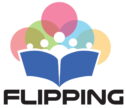Introduction
Welcome to our blog! In this post, we will explore the exciting world of flipped learning and why it is the future of education. Gone are the days of traditional classroom settings, as the recent shift to online learning has showcased the need for more flexible and innovative teaching methods. Flipped learning has proven to be an effective model that not only adapts to uncertain times but also meets the demands of the labor market.
So, what exactly is flipped learning? It is a blended learning model where learners watch online lectures, read extra resources, participate in online discussions, or conduct research at home. They then come to the classroom ready to engage in hands-on activities and discussions with the guidance of a mentor.
The Power of Flipped Learning
Research has shown that flipped learning is more effective than traditional face-to-face or online-only methods. In a 2015 meta-analysis, it was found that learners who experienced flipped learning demonstrated higher achievement, greater engagement, and improved critical thinking skills.
Flipped learning allows learners to take control of their own learning journey. By providing online resources and lectures, students have the flexibility to learn at their own pace and revisit concepts as needed. This individualized approach promotes a deeper understanding of the material and encourages self-directed learning.
Applying Flipped Learning to the Future
In an ever-changing world, adaptability and problem-solving skills are becoming increasingly important. Flipped learning aligns perfectly with these needs, as it focuses on application-based and problem-solving-based approaches. By engaging in hands-on activities and discussions in the classroom, learners develop critical thinking skills and gain practical experience.
Furthermore, flipped learning prepares learners for the demands of the labor market. Employers are seeking individuals who can think creatively, work collaboratively, and adapt to new situations. Flipped learning fosters these skills by encouraging active participation, teamwork, and the ability to apply knowledge in real-world scenarios.
Conclusion
As we look towards the future, it is clear that flipped learning is the way forward in education. Its ability to meet the needs of learners in uncertain times, promote critical thinking, and prepare individuals for the labor market makes it a powerful tool for both students and educators.
So, let’s embrace flipped learning and revolutionize the way we educate. Together, we can create a future where learning is dynamic, engaging, and tailored to the needs of every learner.
